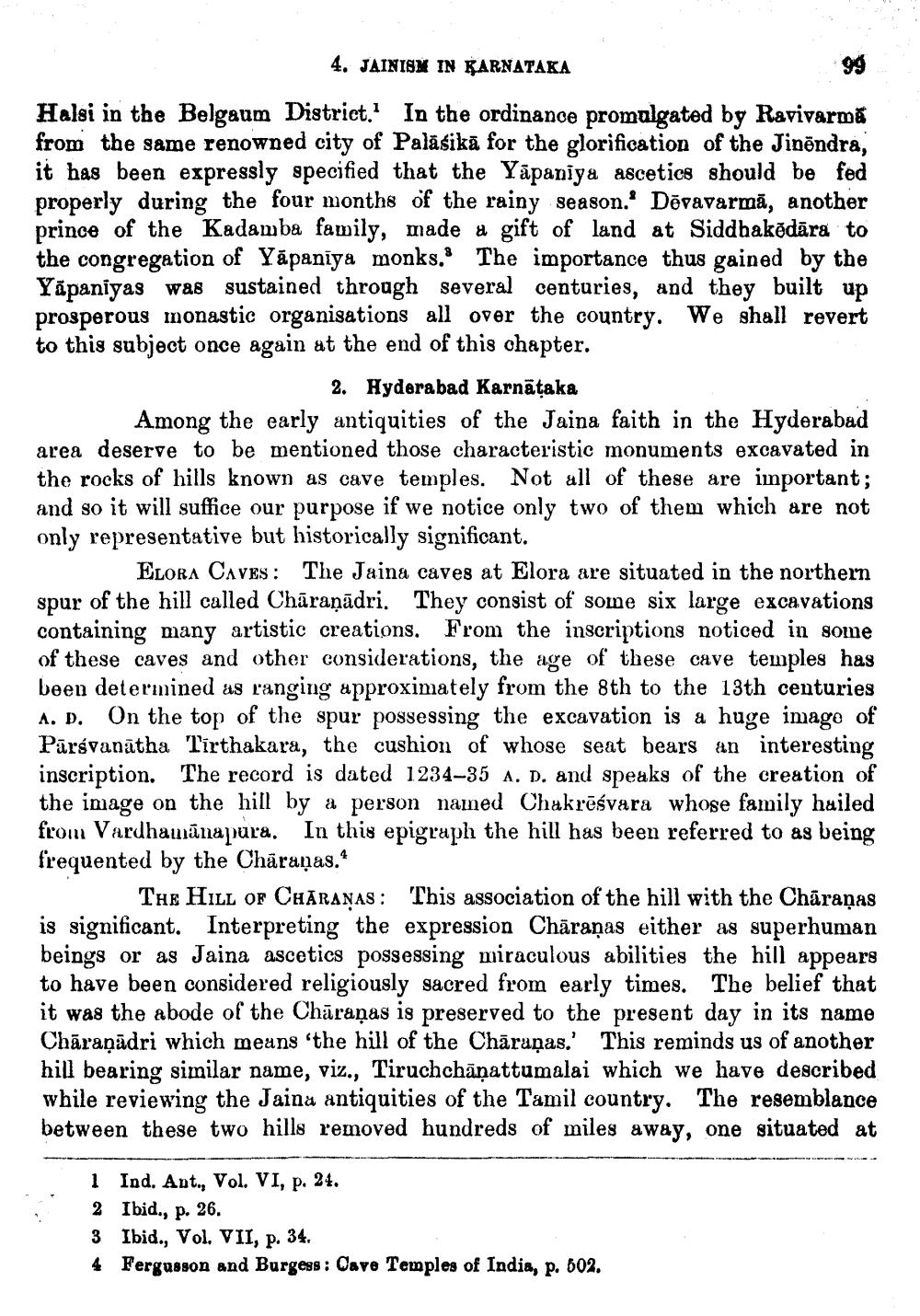________________
4. JAINISM IN KARNATAKA
Halsi in the Belgaum District. In the ordinance promulgated by Ravivarma from the same renowned city of Palāśikā for the glorification of the Jinõndra, it has been expressly specified that the Yāpaniya ascetics should be fed properly during the four months of the rainy season." Dovavarmā, another prince of the Kadamba family, made a gift of land at Siddhakədāra to the congregation of Yāpaniya monks. The importance thus gained by the Yãpaniyas was sustained through several centuries, and they built up prosperous monastic organisations all over the country. We shall revert to this subject once again at the end of this chapter.
2. Hyderabad Karnātaka Among the early antiquities of the Jaina faith in the Hyderabad area deserve to be mentioned those characteristic monuments excavated in the rocks of hills known as cave temples. Not all of these are important; and so it will suffice our purpose if we notice only two of them which are not only representative but historically significant.
Elora Caves: The Jaina caves at Elora are situated in the northern spur of the hill called Chāraṇādri. They consist of some six large excavations containing many artistic creations. From the inscriptions noticed in some of these caves and other considerations, the age of these cave temples has been determined as ranging approximately from the 8th to the 13th centuries A. D. On the top of the spur possessing the excavation is a huge image of Pārsvanātha Tirthakara, the cushion of whose seat bears an interesting inscription. The record is dated 1234-35 A. D. and speaks of the creation of the image on the hill by a person named Chakrēśvara whose family hailed from Vardhamānapura. In this epigraph the hill has been referred to as being frequented by the Chāraṇas.*
The Hill of Charaṇas: This association of the hill with the Chāraņas is significant. Interpreting the expression Chāraṇas either as superhuman beings or as Jaina ascetics possessing miraculous abilities the hill appears to have been considered religiously sacred from early times. The belief that it was the abode of the Chāraņas is preserved to the present day in its name Chāraṇādri which means 'the hill of the Chāraņas.' This reminds us of another hill bearing similar name, viz., Tiruchchāṇattumalai which we have described while reviewing the Jaina antiquities of the Tamil country. The resemblance between these two hills removed hundreds of miles away, one situated at
1 Ind. Ant., Vol. VI, p. 24. 2 Ibid., p. 26. 3 Ibid., Vol. VII, p. 34. 4 Fergusson and Burgess : Cave Temples of India, p. 602.




